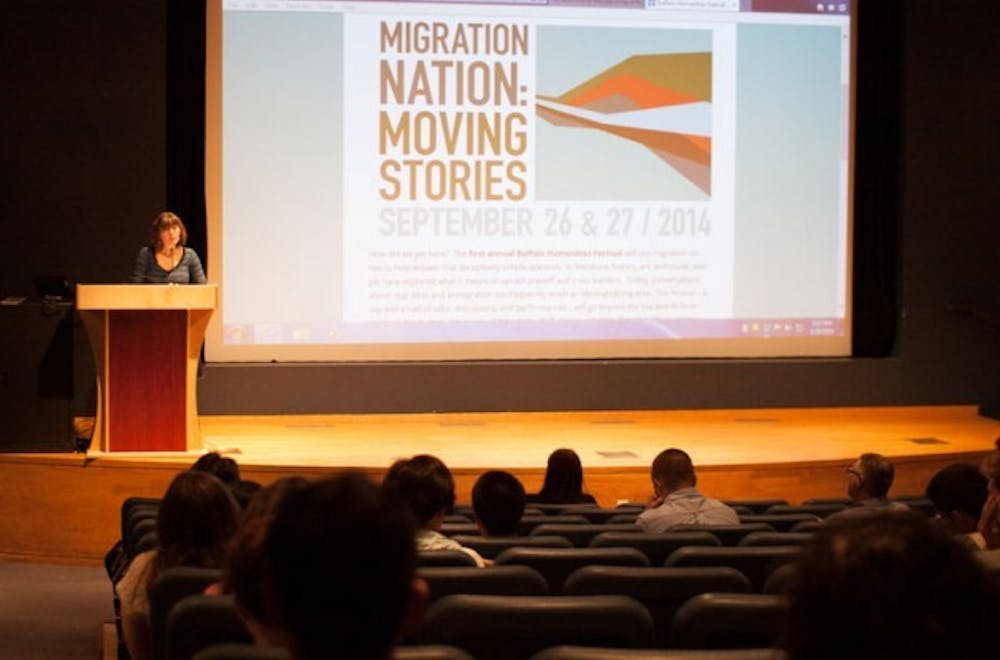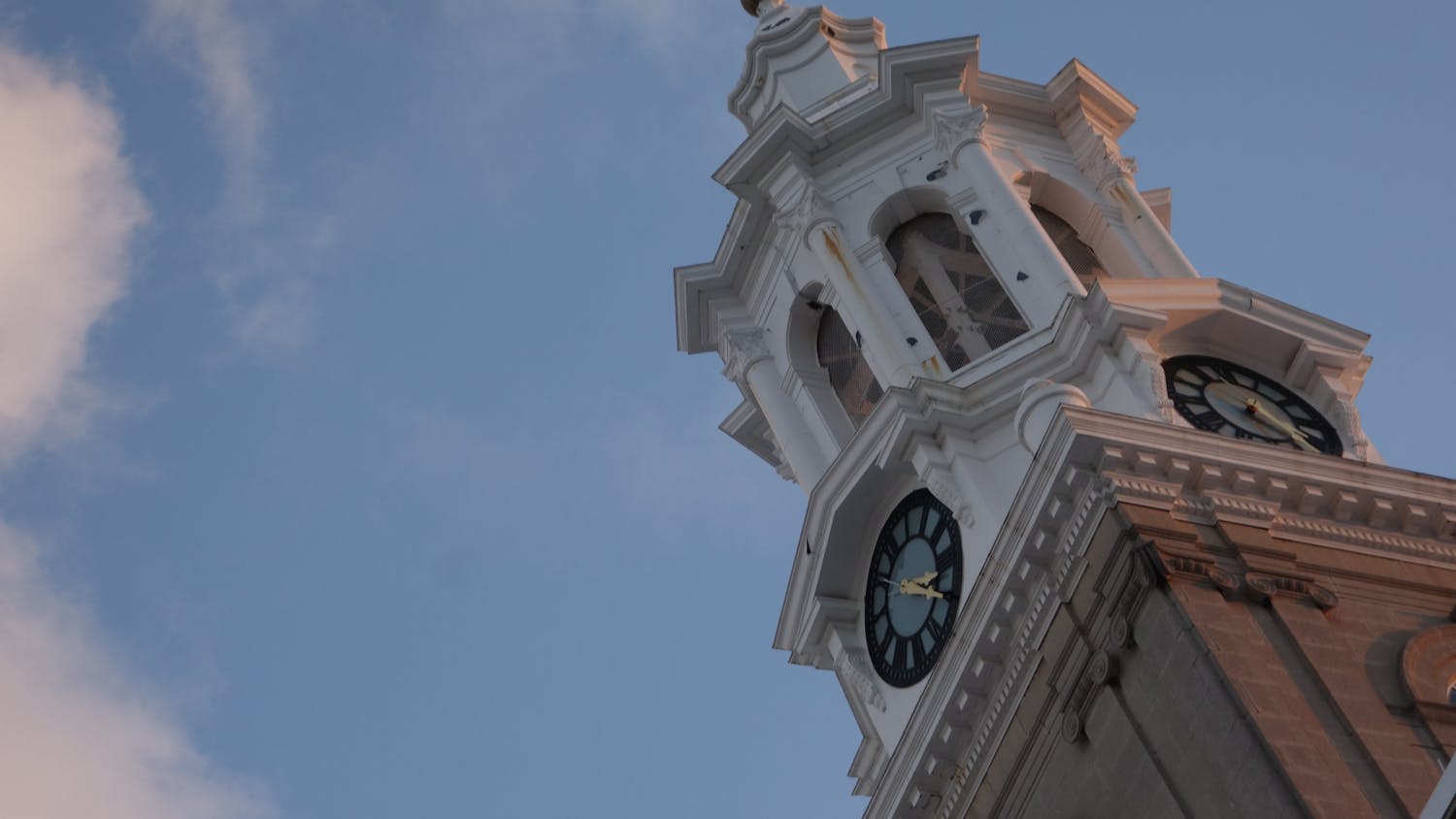Arizona Border Police found a decomposing, unidentifiable male body deep in the Sonora Desert. Underneath the deceased man’s shirt, officers found the words “Dayani Cristal” tattooed on his chest.
On Thursday, the story of immigrants’ journeys crossing the American border made its way from the West Coast to UB’s Center for the Arts. UB screened the documentary “Who is Dayani Cristal?” as part of the preliminary events for the first Buffalo Humanities Festival. The documentary, which won an award for cinematography at the Sundance Film Festival in 2013, followed Humanities Festival theme of “Migration Nations: Moving Stories.” The screening also hosted a discussion to talk about the significance of the documentary.
The film, directed by Marc Silver, follows a nameless migrant who tried travel to American from Honduras. In the end, the man perished in the sun-blistered Sonora Desert in the Southwestern United States. The tattoo was the only clue to his identity.
Tanya Shilina-Conte, a UB professor with Ph.D. in English, introduced the film and said the United States-Mexico border is the most frequently crossed border in the world. She said attempting to cross is “not worth” risking anyone’s life. The Sonora Desert is located in the western part the United States-Mexico border, connecting Mexico with Southeastern California and Southern Arizona. Within the past decade, the Sonora Desert has been the most traveled route along the United States-Mexico border.
“The Sonora desert’s extreme climate, temperatures reach as high as 180 Fahrenheit and then [drop] suddenly to 50 Fahrenheit,” make it “one of the deadliest stretch of land on the planet,” Shilina-Conte said.
The extreme temperatures, however, do not deter people trying to cross the border.
“[The] economic needs and desires continue to beckon people to take the ultimate risk,” she said.
Joseph Conte, an English professor at UB and Shilina-Conte’s husband, held a one-hour discussion after the film screening ended. Conte began the discussion by reminding viewers of one of the film’s most powerful quotes from a friend of the nameless migrant. The quote questioned the United States’ billion-dollar investment in the United States-Mexico border, claiming it was an inanimate and dead investment and the money could instead be used to help human beings.
To hone the issue of immigration back to Buffalo, Conte also spoke of the apples at Wegmans. He said he wondered who would stop to think of the migrant workers who gather the fruits. He asked who would even realize the blue-collar labor face is “brown” in the United States.
The audience’s commentary on blue-collared immigrants sparked a discussion centered on xenophobia, a dislike or fear of people from other countries.
The documentary had shots of a “mass grave” – lockers in a morgue containing ashes – present in the United States. The ashes are of the unidentified illegal immigrants who attempted to cross the United States-Mexico border but died because of the journey across the desert, Conte said.
“I don’t want to be associated with a mass grave,” Conte said. “I don’t want the United States to have the mass grave of people on our hands or under our feet.”
Conte said if America’s investment toward U.S.-Mexico border wall keeps growing, attempts to cross the wall could lead to more deaths.
The screening ended and many of the participants left with plenty to think about – an impact that Shilina-Conte intended.
After the discussion ended, Conte said it was a “very spirited discussion of the crisis of immigration” and “we are trying to understand for ourselves what roles we play in that drama as Americans.”
“I think that most of us would prefer to not think about [immigration],” Conte said. “But the crisis and the conditions, that are described by ‘Who is Dayani Cristal?’ are the crisis and the conditions that all of our parents, grandparents and great grandparents, faced at some point in the past. I guess you could say that a film like this, raises the consciousness of us, as Americans, as to the cost of migration and immigration.”
Paolo Antypas, a senior communication major, thought the film screening was an important part of the Buffalo Humanities Festival as well as to the world because of refugee problems in Syria and Iraq.
“The discussion at the end, not only helped us give our points out but also listen to the other’s points,” Antypas said. “And the most important thing is to get an opinion and conceptualize what you believe is the right way to go about solving something like this.”
email: news@ubspectrum.com





